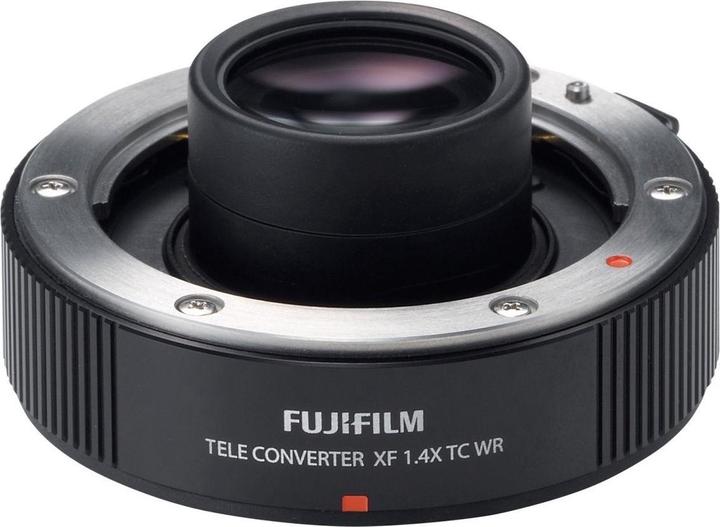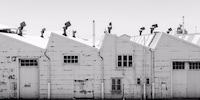
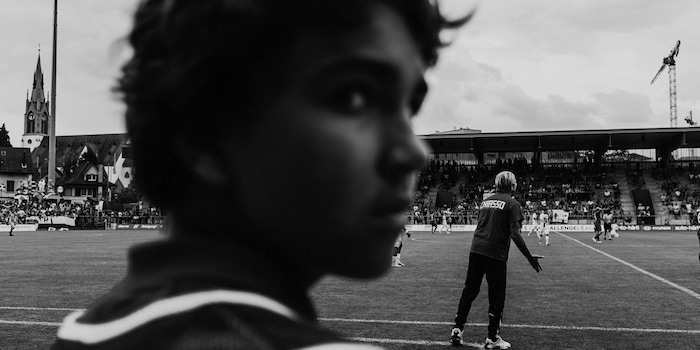
Nine unusual tips to improve your sports photography
Sporting events are rewarding, but they can also be pretty challenging if you’re a photojournalist trying to capture them. I’m going to show you how to handle this and what to remember when it comes to documentation.
Let’s take a football match as an example. This is where joy and sorrow go hand in hand. From a photographer’s point of view, you’ve just hit the jackpot. Why? Because this is a place where you can transfer emotions visually and tell a story in pictures.
The challenge is in deciding what is important and reacting in the right way. This starts with the type of equipment you use. When you’re on site, it covers everything from the place you choose to set up to the position of the camera.
What this means is there are lots of things to catch your eye on and off the turf. There are also just as many opportunities for you to react as a photographer.
1. Know what works
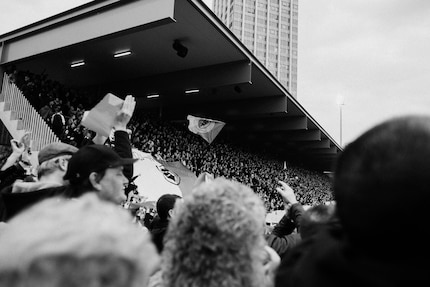
It helps no end when you know the sport and the stadium.
You’re at a big advantage when you know the lie of the land. And I don’t just mean the grounds or the stadium. I’m also talking about knowing a thing or two about the sport, the team and the fan scene. The more you can get to grips with the subject, the better. If you haven’t already done so, make sure you go to one of the games beforehand and talk to colleagues and loyal fans or staff.
Decide for yourself what is relevant for your story and what kind of images would show that well. The better you know the team and the game, the easier it will be to get a feel for what to expect.
For instance, is the player they’ve subbed on in the 80th minute known for causing a furore after substitution? Is he the fan favourite everyone has been waiting for? If so, you need to be ready for when he comes onto the pitch, and always keep your eyes on him.
2. Know what you want to say with your pictures
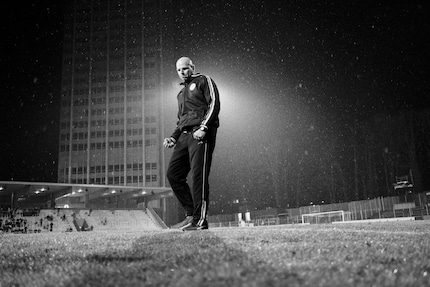
You can even put people such as the sausage vendor or the coach in the foreground.
What matters to you? The football match itself? You can play around with themes that inspire you during the event. For example, you could look at how a certain player or the sausage vendor reacts to the match. You can also put the spotlight on the place itself by pushing the stadium to the forefront of your story. Show how the grounds transform from an empty, quiet space to a backdrop that is bursting with noise and emotion.
3. Know how to react
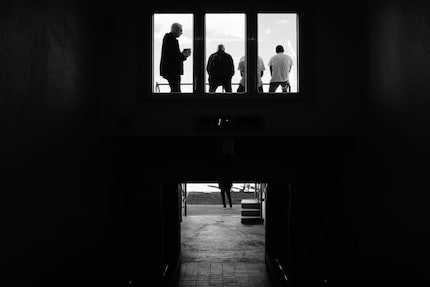
You only get good photographs with the right equipment.
Once you have picked your theme, you can get started. Depending on the sport and your story, you might need different equipment. You can’t go wrong with the following:
- Camera: A good autofocus and the ability to take photos in quick sequential shots are obviously advantageous.
- Telephoto: I almost exclusively use a 50-140 mm lens myself, and I prefer to pair it with a convertor for more focal length rather than cart heavy lenses around with me. I always want to be mobile, and I recommend you take the same approach.
- Wide-angle lens: You mostly use this lens for atmospheric shots, such as reportage. The 23 mm focal length of the X100F is best suited to my reportage photographs and atmospheric images. If I need more or less focal length, I’m fortunate to have a teleconverter and wide-angle lens converter. They are quick to put together and very practical.
- Check the weather forecast and always pack an umbrella in case of emergencies for you and your camera.
- Plenty of batteries and memory cards. I have a total of nine with me. But four to six for two cameras should be enough.
4. Watch what is going on and let the energy lead the way
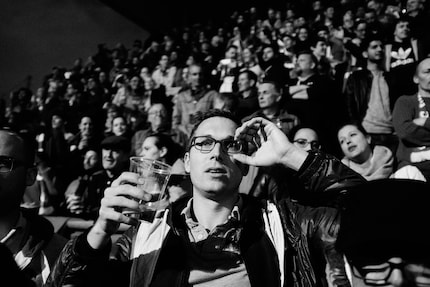
You need a good feel for photography to know where emotions will erupt next.
Watch what is going on carefully and see where the energy is that you want to showcase in your photographs. Spectators in one corner of the stadium might be more active, or the opposing team’s coach could be an impulsive person who manages their side with wild gesticulations. Or it could be the ball boy, who commiserates and cheers on his side. Stay alert and try to be swept along with the emotion.
5. Remember your shot list
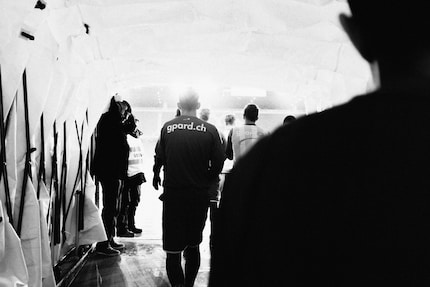
You should plan all the important moments you capture.
I recommend taking your safe shots first. In terms of football matches, that means photographs of the full stadium, the arrival of fans and their actions at the start of the game or pictures of the players coming in.
Where possible, try to get different photographs of the same subject. In other words, you want to photograph a setting from different ranges and mingle with people as much as you can.
6. Tips for your position and options
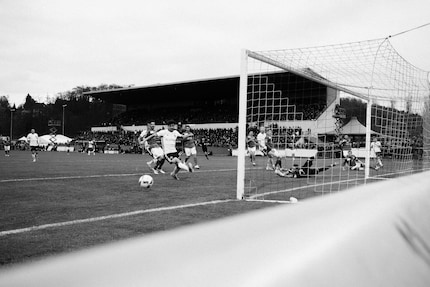
The perspective you choose is crucial.
Once the game finally begins but before you set up on the sidelines, it is worth taking some time to see what is going on and find out where the energy is headed.
Let’s assume the home team you support and whom you want to be the focal point of the photograph have their fans behind you and are playing to the right hand goal. You obviously want to snap a picture of one of your team’s players celebrating.
To do that, you need to stand to the back right or to the side of the goal. But imagine this. The energy is mostly heading in the other direction and you’ve set yourself up on the left-hand side on a level with the home team’s goal. All of a sudden, there is a surprise goal on the other side. What do you do then?
It’s not worth getting annoyed. Instead try to tell the story of what is going on as best you can from where you are and with the tools you have. In response to the offensive action, you could already be prepared and turn the camera towards the home fans behind you. And if there was a goal, you would have the crucial celebratory moment and have captured the fans going crazy straightaway. Once you have the photograph, be on the look-out for other pictures that tell stories. Maybe you notice the opposing team’s forward standing crestfallen in the middle of the celebrating defender's goal. Perhaps you manage to catch the goalkeeper’s clenched fist and silent cheering. The important thing is to always stay alert and be aware of your position, your technical equipment and the opportunities that can come from combining the two.
7. Take photographs and action shots that tell stories
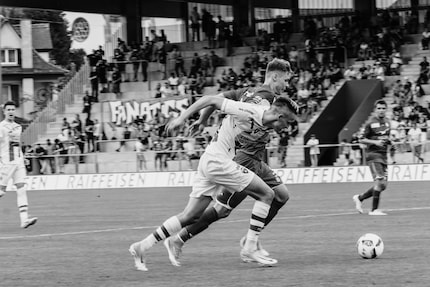
Quick movements need fast shutter speeds.
Photographically speaking, the pictures that tell a story contribute more to your documentary work than the action shots. But the latter also need it. Your photo gallery needs action shots so it lives up to expectations. At the start of this article, I introduced you to my equipment. Alongside my camera with a good autofocus that can take high-speed sequential shots, I also carry around 50-140 mm and one 1.4 converter. I’m always prepared with a second camera that has the right wide angle. For action and panning shots, I prefer the long side of the pitch and, of course, the telephoto lens. I try to keep my subject (the player with the ball) in focus during exposure and photograph them at varying shutter speeds to get different effects.
While taking photographs with high shutter speeds makes the background blurry and highlights the player’s dynamic movement, photos with short exposure times freeze the moment and are a vehicle for the emotions on the pitch. For example, after a missed opportunity when the striker throws their hands up in despair or when a player who has just been fouled has a pained look on their face.
8. Look for a way to close the story
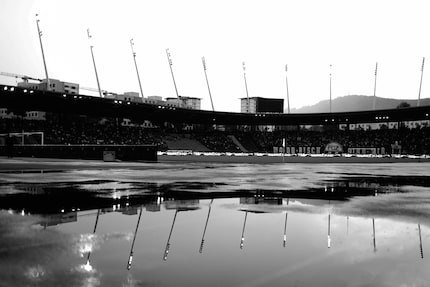
A certain calm slowly returns to the stadium.
The match is over and you’re sure you’ve got loads of photos on your memory card. But you’re still missing the photo that rounds off the whole story. This can be an atmospheric shot – either the stadium from a distance with the floodlights still on or streams of fans leaving the grounds. Look for your picture and make sure your photo gallery ends with something that rounds off the experience.
9. Remember that good vibes make good photographs
This is less of a tip and more of a fundamental conviction. Take pleasure in everything you do and try not to step on anyone’s toes. If the stadium is your photographic playground again in the future, you should make sure you treat it with respect and abide by its rules. You should also respect the fact that fans don’t like to be photographed with pyro and that the football coach won’t want you right next to him and his players at certain times. However, I am sure you will still find a way to get the picture. Being tactful with the stadium and people involved is bound to open doors for you and your photography in the future.
This equipment I used
You may find the following interesting (in German)
Father, photographer and in love with Winterthur. In my life I had to get used to many new places and new cultures; most recently to Winterthur and Switzerland. This makes me an interested observer, always trying to decipher how the new environment works. Photography makes it much easier for me and takes me to the most diverse places of this new adopted country. It is my door opener and my reflection surface.
Instagram: <a href="https://www.instagram.com/myfujilife/" target="_blank">@myfujilife</a>
Web: <a href="http://www.milad.ch/" target="_blank">milad.ch</a>
Interesting facts about products, behind-the-scenes looks at manufacturers and deep-dives on interesting people.
Show all
